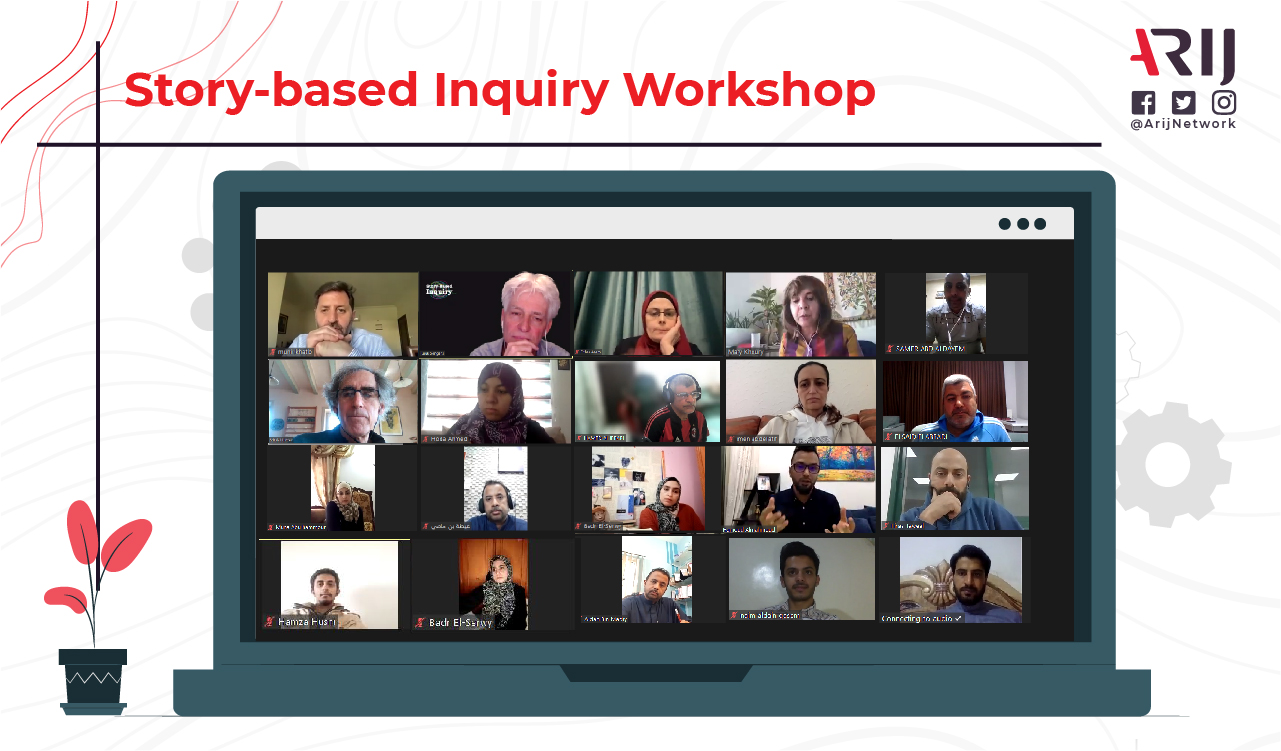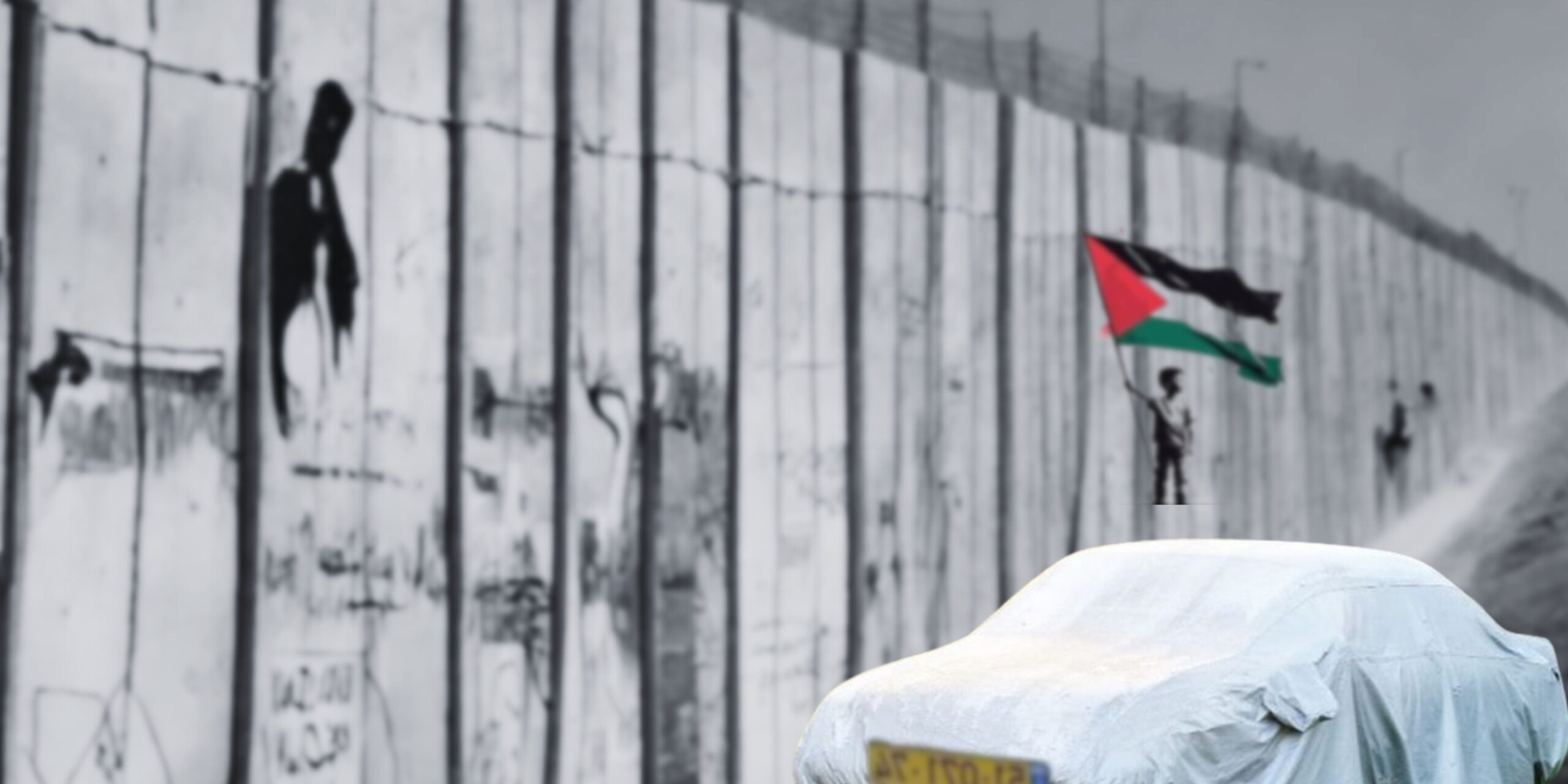ARIJ Network – Arab Reporters for Investigative Journalism – held a 4-day intensive training workshop for Arab journalists under the title “Story-Based Inquiry Method”, with the lead of the two experienced trainers, Dr. Mark Hunter and Luuk Sengers. The workshop was conducted from Monday – March 8 to Thursday – March 11, for three hours each.
The first day of training focused on the story-finding method for investigative reports and hypothesis formulation. The two trainers stressed the importance of the hypothesis, as it is a starting point for further investigation and a proposal based on specific evidence. In other words, the hypothesis is to write down all expected results in which the journalist assumes s/he will find while investigating.
Participants were trained on the methods of finding investigative stories, identifying sources, asking preliminary questions and formulating the hypothesis.
Dr. Mark Hunter is an award-winning journalist and the co-founder of the Global Investigative Journalism Network (GIJN). Hunter is also the lead author of the ARIJ Investigative Journalism University Curriculum “The Modern Investigative Journalism”.
Luuk Sengers is a journalist and lecturer. He investigated the practices of major corporations and their impacts on the environment and climate change for international magazines and newspapers and is co-author of the “Story-Based Inquiry Method”.
Chronology and Open Source
On the second day, the training focused on the chronological order of the story events and searching open sources for data and information. Hunter stated that the timetable is an important component of investigative reports, saying that investigative journalists must systematically search the chain of events related to the story in which the events occurred right after determining the hypothesis. Since the hypothesis is divided into several elements; verb, subject, and object, it is necessary to refer to the chronology of all elements through open sources such as communication methods, websites, surveys, the public and company records.
ARIJean and Editor-in-Chief of Harvard Business Review, Hammoud Al-Mahmoud, joined the workshop as a guest on its second day, providing training on accessing open-source in the Arab countries. Al-Mahmoud stated that one of the biggest reasons that lead journalists to believe that there are no available resources is their preference to stay in a comfortable zone, as a result of preconceived and inherited ideas on the lack of information. He gave examples from several Arab countries on how to obtain data that journalists often believe are not available, such as the official gazette and company records in each country. He added that there is a way to access information and data, but more research and a deeper investigation is needed.
Hunter advised that it is imperative to start with easy angles every time the journalist verifies something specific. Form a timeline table with the resource for each piece of information and update regularly. If the journalist does not trace all the resources and information in his/her possession, s/he will be lost and will have to work all over again.
A journalist is as good as the quality of his/her resources
The third day of training focused on the map of resources related to the investigative report and its relationship with the chronological order of the resources. It is deemed as a guide that directs the journalist towards the resources needed for the story, whether interviews, recordings, data, etc.
Sengers said the journalist is as good as the quality of his/her available resources and added that to identify the sources, the journalist has to examine the timeline of the story, which provides all the people associated with it. Always search for reliable and credible resources and make sure there is a way to reach them.
To avoid being overwhelmed by the enormous information in hand, Sengers advised creating a “master file”, in which all the elements collected are compiled to manage the project. This way, it will help the journalist reach the final story and act as a database for the investigation. It is also necessary for the journalist to always write notes and not rely on memory. Besides, the journalist must be well-prepared before meeting resources.
Sengers stressed the need to analyze the information obtained. The journalist is not required to collect data and documents and then publish them. Instead, the journalist must analyse the findings and turn them into a story, and make every piece of information meaningful and purposeful.
Story Writing: Structure is Key
On the fourth day, the training focused on narration methods under the motto “a story that is not written with effort, will not be useful for reading.” Sengers explained that the journalist has to tell the reader what is the story and draw his/her attention from the first paragraph. He added, stories and events attract more than facts, and they should lead to the truth.
Let the reader breathe, give him room to think, and re-read again. Sengers suggested dividing the story into short stories. To facilitate the writing process, Sengers advised structure building methods that depend either on temporal or spatial narration. First, divide the narration into four parts: the problem, the effect, the cause, and the solutions. Secondly, focus on places by moving from one place to another and narrating all the events associated with them. It is important to settle on a specific structure before starting to write.
For the elements of the story to be convincing throughout the text, it is advised to start with a strong introduction that summarizes the story and attracts attention. Then, tell people about influential things that interest them. Afterwards, add the introduction; which is an action where an example, like a victim’s story, is used. It is where the most dramatic part of the story is included.
Moving on to the core of the topic, which includes a summary of the hypothesis called the nutshell paragraph that tells the reader what are the findings of the story. Later, in the body of the story, all facts, evidence, documents and proofs should be displayed. In the conclusion part, it is possible to add a quote that summarizes the whole story. However, the journalist must not be repetitive and should look for something that has not been used before and has a strong impact. As Sengers mentioned, the journalist has to keep some evidence for the conclusion.
Hunter noted that journalists may become irritable and overwhelmed with despair when writing especially when dealing and thinking about victims. The journalists’ emotions should not be reflected in the story. Journalists should put themselves at a distance when writing and control their emotions and let the victims speak for themselves.
A total of 22 journalists participated in the training from seven Arab countries including Egypt, Iraq, Jordan, Lebanon, Palestine, Tunisia and Yemen. At the end of the workshop, participants expressed their satisfaction from the benefit acquired during the workshop in their investigative work.








